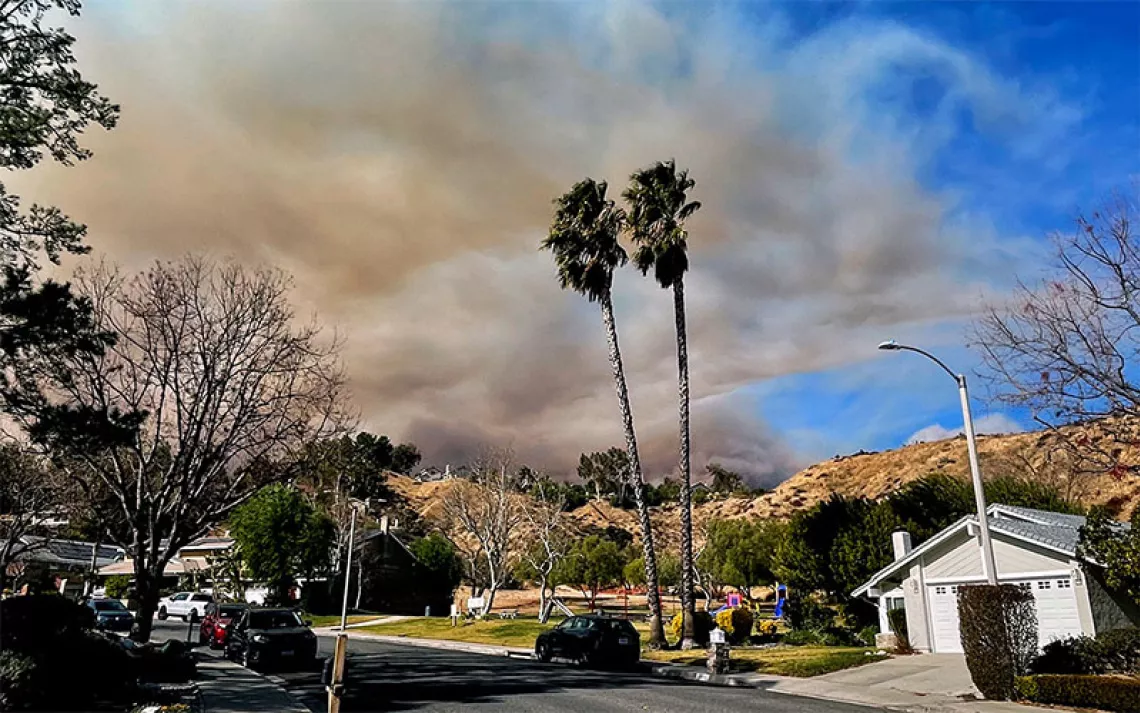The Future of Clouds
Their little-understood role in regulating the earth’s climate is the difference between an uncomfortable future and an unlivable one

Photo by iStock/Rasica
I live on a tiny island off the coast of South Carolina, where we are lucky to experience many cloudless nights. You can look up and see Venus, Jupiter, and Saturn shining bright. You can sit for hours counting the constellations that dot the night sky.
The nights are clear because dry air doesn’t hold as much moisture and can’t form clouds. Cloudless nights are quiet and beautiful, but they’re also chilly because clouds trap heat in the atmosphere and push it back down toward the earth. When the sky is clear, there’s nothing to hold the heat down.
According to atmospheric scientist Pier Siebesma, high, thin clouds in particular heat the atmosphere by creating a “blanket effect” around the planet, the way a woolen blanket traps warmth close to the skin. “If there weren’t high clouds, the earth would cool tremendously, because clouds absorb radiation that the planet emits and radiate it back down in a way that’s similar to the greenhouse effect,” he says. Their impact is enormous because two-thirds of the planet is generally covered in clouds.
Lower clouds, those less than a mile from the earth, block sunlight and create shade and reflect solar energy so that it’s not absorbed by the earth’s surface. These clouds are important to planet’s water cycle because they’re the ones that cool us down and release precipitation back down to the ground.
Clouds impact climate, and changes in climate can also cause changes in clouds—it’s called the “cloud-climate effect.” Uncertainties about the impact of clouds is one of the main reasons there’s such a wide range in future temperature models. A recent study in the journal Nature Communications by Kathleen Schiro, an assistant professor in the Department of Environmental Sciences at the University of Virginia, outlined the “inexact science” of modeling future temperatures due to cloud unknowns. Climate models range widely in the amount of warming that they predict with a doubling of carbon dioxide in the atmosphere, says Schiro—anywhere from 2°C to an unthinkable 5°C—and “much of that range has to do with how different climate models represent changes in the clouds.”
A growing body of research shows that, so far, warming temperatures seem to cause a reduction in low cloud coverage over subtropical oceans. That’s bad news because these “tropical stratocumulus” clouds play a pivotal role in reflecting the sun’s radiation over 40 percent of the earth’s surface in a part of the world with a high level of solar radiation. If they were significantly diminished, temperatures could increase greatly.
Why does warming reduce low-cloud coverage? As the atmosphere warms, it takes more humidity to achieve condensation and to form clouds. Additionally, says Schiro, tropical stratocumulus clouds thrive in areas where there’s a strong “temperature inversion,” meaning that you have colder temperatures sitting below warmer temperatures. As the sea surface warms, there’s not as much of a difference in the temperature on the ocean surface and the air sitting above it, which makes it harder for stratocumulus clouds to form. What’s worse, it also creates a “positive feedback loop”: Cloud coverage goes down because ocean surface temperatures are rising, and ocean surface temperatures go up because of the lack of low cloud coverage.
Another impact of a warming planet is that warm air pushes clouds higher into the sky, where, as mentioned before, they create a blanket effect. If cloud tops are too high, they block outgoing infrared radiation and further heat the planet. “This keeps heat locked in our atmosphere,” says Siebesma.
Additionally, the type of clouds that increase and decrease also impact atmospheric temperatures. Higher temperatures mean fewer ice clouds—clouds made of ice crystals. These are likely to be replaced with more water clouds. Even though water clouds are better suited for reflecting sunlight compared with ice clouds, says Siebesma, the net effect of fewer stratocumulus clouds and higher cloud tops is still a significant net temperature increase.
 The Magazine of The Sierra Club
The Magazine of The Sierra Club



